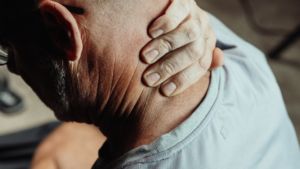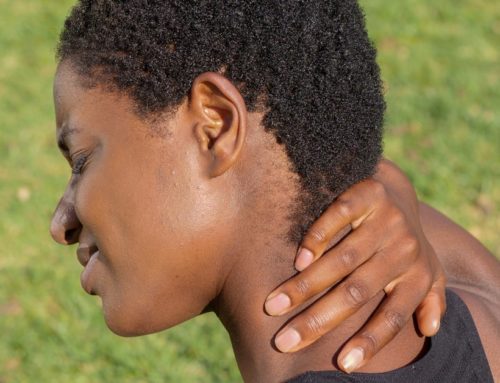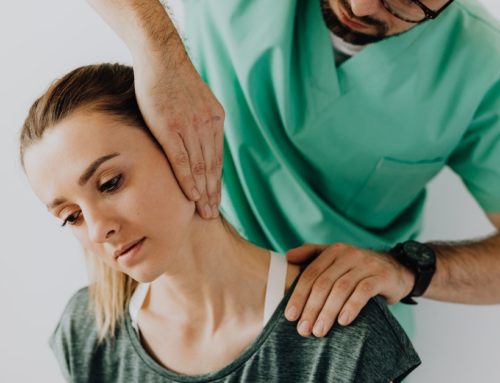Summer is here, and many of us are making up for lost time and hitting the road again. Vacations are great for your mental health, but traveling can do a number on your back. If you already suffer from sciatica or other back and neck problems, you’ll want to avoid aggravating them while you’re on your trip.
Here’s how to prevent back pain while you travel:

Back Pain and Long Car Rides
Road trips are an American tradition. The journey of a road trip is as much a part of the vacation experience as your destination. You don’t want your trip sidelined by back pain. Both drivers and passengers can experience back pain flare-ups during long car trips, but drivers often struggle more. There are a limited number of positions you can move into while driving, and it’s harder to stretch. However, you can drive and be comfortable at the same time.
Make sure you get comfortable before you leave the driveway. Take wallets, phones, and everything else out of your back pockets. Sitting on something can misalign your spine. Move your seat around to find a comfortable position. Ideally, your knees should be slightly higher than your hips. Pay attention to your head position as well. You want to keep your head centered between your shoulders, this is called a neutral head position, and it keeps you from straining your neck. The Highway Traffic Safety Administration advises keeping ten inches between your breastbone and the steering wheel for airbag safety. Don’t get too far from the wheel, though, or you’ll strain your wrists, shoulders and lower back.
Shift your position occasionally as you drive. Any movement that is safe while driving is encouraged. The goal is to get blood flow to your back. For people who don’t suffer from chronic back pain, a 15-minute break for every two hours of driving is recommended. If you have back problems, you should consider taking a break every hour at least. Preplanning rest stops is a good way to make sure you get out of the car and move around enough on your trip. It can also be fun– as long as you’re driving by the world’s biggest ball of yarn, you might as well get out and see it up close.
Passengers should also follow all of the above advice, and feel free to stretch or shift more than the driver (just be sure to keep your seatbelt on).

Back Pain On a Plane
Economy plane travel can be cramped and uncomfortable. If you suffer from back or neck pain, you may notice a spike in your discomfort when you disembark. The good thing about plane travel is that you don’t have to worry about keeping your foot on the gas and your eyes on the road. This gives you more freedom to move around and change position.
Any time you are sitting for a while, you have to be careful about how you sit. Again, don’t sit on your wallet or anything else, and get comfortable as soon as possible. Try to lean back rather than hunching forward in your seat. A horseshoe pillow can do wonders for those who suffer from neck pain. Placing a small pillow behind your lower back can help you keep a normal lumbar curve and avoid muscle spasms. Hydration is also essential for muscle health. Dehydrated muscles spasm easily, so drink plenty of water before and during your flight (and avoid too much caffeine). Most flights allow passengers some time where you can get up and walk around. Take advantage of this! Try to get up at least once an hour and walk the aisle or do a quick stretch.
Hauling luggage is another potential cause of back pain. Try to pack light and pick a body-friendly suitcase. Backpack-style suitcases are the best for your back as long as they don’t exceed 15% of your body weight. Rolling suitcases are second in line. Four-wheel rollers are better than two-wheel rollers because they put your arm and shoulder at a less strenuous angle. Look for a suitcase with a handle that comes up to your waist and is easy to grip.
Whether in a car or on a plane, if you know your back will act up, you may need to try other interventions. You could try taking an over-the-counter pain reliever before your trip or use your heated seat or a hot or cold pack. Talk to your healthcare provider about the best options for you.

Avoiding Pain while Cycling
More cities than ever are bike-friendly, and many Americans are choosing to see sights on two wheels. Cycling is great exercise and a safe choice for those with knee pain. Unfortunately, cycling requires a leaned forward position that can put a strain on the lower back. People with severe back pain may need to avoid cycling. Others may find they can cycle without increased pain by following some simple guidelines.
A saddle that’s too high and handlebars that are too far away are common causes of back pain for cyclists. If you are feeling uncomfortable, evaluate your position. There should be a slight bend to your knees, and you shouldn’t feel like you are straining your shoulders to reach the handlebars. If you know that cycling will be a part of your trip, it’s a good idea to start preparing a few months ahead by working out your core muscles. A strong core will support your back and reduce the risk of injury.

What if My Back Hurts After My Trip?
Don’t hesitate to see a chiropractor if you are dealing with pain and stiffness after your vacation. In fact, it’s a good idea to see one before you go. Our Chiropractors in Michigan can make sure your back is in optimal condition before your trip and fix any damage that may happen on your vacation. If you’re in the area vacationing, you can also come in and see us. At Burkhart Chiropractic, we’ve been honored to have patients come from all over the country to seek our services. We can ease your pain and get you back to enjoying your trip.





